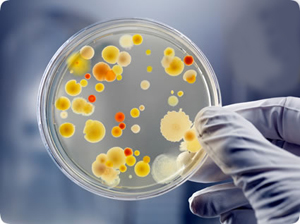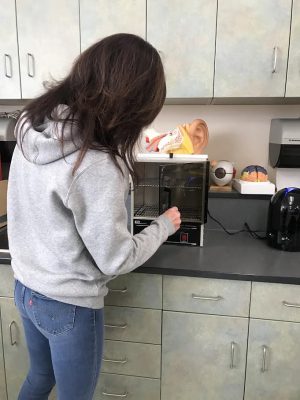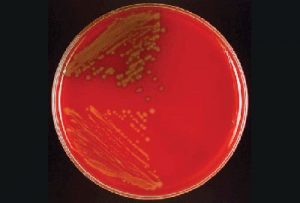Germs: The Misunderstood Microbes

Staph germs growing in a petri dish
February 16, 2018
When most of us think of germs, our minds conjure up the stereotype of “bad, invisible, disease-inducing microorganisms” that only serve to make us sick. We shudder when we realize that we have just touched a possibly germ-ridden surface and run to the nearest hand sanitizer. Taking precautions like this are not a bad idea, but despite the popular misconception, not all germs are bad! In fact, 90% of the microbes in our bodies benefit us in many ways; and it is only the small 10% of them that can potentially make us sick. This fact, however, does not imply that we should have a cavalier attitude about that “bad” 10%. Being aware of our surroundings and taking the proper precautions are the most advisable actions to heed. To illustrate this concept, Microbiology Honors teacher, Mrs. Gant, conducts a contamination lab every year which identifies types of germs and pinpoints the specific areas within the school that harbor them. The results are intriguing.

Gant defines the basic concept of contamination as the “presence of microbes on an object or person.” Microbes are microscopic organisms and we have “100 times more microbes in and on us than we do cells.” states Gant. Microbes earn a bad reputation because “They have the potential to cause us problems.” But in reality, Gant adds, “they also do lots of good things for us like make vitamins in our intestines and ward off bad bacteria.”
During the week of Jan.16, Gant’s 3 Micro classes began their germ quests by swabbing different areas of the school. Students swabbed numerous locations such as: the weight room, keyboards in the library, athletic training room tables, drinking fountains, Mrs. Paine’s desk, and the kitchen drain. Gant reveals that students found “streptococcus bacteria and staphylococcus (aka strep and staph infections) in the drinking fountains and kitchen.” She also adds that, “The kitchen drain isn’t a threat to anyone because most students don’t come into contact with the drain; but she adds, “It makes sense that strep was found in the drinking fountains because if students’ saliva gets into the drain as they drink out of it, germs will be growing there.”

These findings prompted the Micro students to initiate some preventative measures. We asked Mrs. Gant what the school community could do to prevent the spread of infection. She indicated that the staff should, “Continue to wipe down places that are touched by a lot of students/staff, and take extra care to clean things such as the drinking fountains and even the Holy water.” Gant stressed that, “The Holy water needs to be cleaned regularly because it is a natural breeding ground for bacteria.” These results, although unsettling, were expected; and Gant reminds us that, “Any microbes that are present in a public place have the potential to cause disease.” Since the school is a public venue, Gant advises the students and staff to be aware that, “microbes are [always] present and have the potential to make us sick; and we need to recognize that they are there in, on and around us.” Students should be mindful of microbs’ presence and be vigilant about washing their hands and/or using hand sanitizers. Do not forget to also use disinfecting wipes on laptops and phones! Following these guidelines will not completely keep sickness at bay, but being proactive is a first step toward fewer sick students and staff with a healthier school environment overall.
